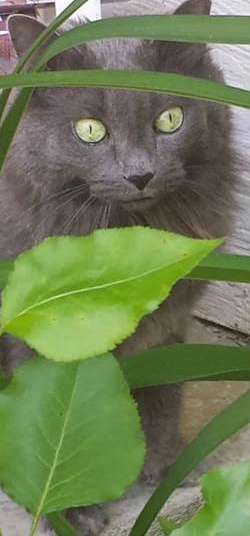This spring marks HSHV’s 10th anniversary of doing Trap, Neuter and Return (TNR)!
Ten years ago, HSHV was at the forefront of a new movement to reduce population and end needless death of outdoor living cats: becoming the first animal shelter in Michigan to institute our own TNR program. Today, we are very proud to have sterilized over 11,000 cats through TNR.
 When I started here, we were euthanizing about half of our animals, many perfectly healthy animals like feral/outdoor living cats. It was tragic, needless death, and it was horrible for our staff and toxic to the organization.
When I started here, we were euthanizing about half of our animals, many perfectly healthy animals like feral/outdoor living cats. It was tragic, needless death, and it was horrible for our staff and toxic to the organization.
Euthanasia is supposed to be a merciful, pain-free death for the suffering. Though I use the term here, I do so loosely. This wasn’t really “euthanasia.” The animals did not need to die and putting down a terrified wild-ish animal is not a pretty process. (Any animal facility still killing healthy outdoor cats claiming they are providing “humane deaths,” without fear and pain, is lying.)
But unnecessary killing is not just inhumane; it can be damaging to the emotional, mental and spiritual health of the humans doing the work. Particularly those working at a humane society because they love animals. It is the worst of “raw deals,” creating wounds that go straight to the soul, handed to people already making great sacrifices in a strained, overloaded industry.
Since 1896, HSHV’s purpose has been to respect and protect animal life. So being the community’s exterminator for any healthy animal also went against our mission and fueled a dysfunctional organizational culture. We further learned that it made little sense for the community. Taking in animals surviving perfectly fine on their own and killing them did not just waste life, it wasted time and money. It had no lasting positive impact. The cats brought in year after year came from the same areas. It was a revolving door of death.
Instituting a TNR program was one of our first major thrusts in ending unnecessary euthanasia and becoming a progressive, healthy, life-affirming organization. It is an important part of why we went from saving just 50% of our animals to 95% today.
Plus, hundreds of outdoor kittens and even adult cats have found loving adoptive homes though the program. One of my own cats is a super affectionate ear-tipped “feral” who once lived on HSHV’s grounds. (Most outdoor cats are not social enough for indoor life, but sometimes cats dumped or lost outside have simply reverted to a wild state to survive.)
As with nearly everything we do, TNR “takes a village” to be successful. It started with our commitment to being true to our mission, even in the face of some loud and bitter opposition (imagine someone screaming in your face demanding you kill a beautiful, healthy animal sitting terrified in a trap), and investing resources into sterilization instead of euthanasia. Which, by the way, works out to nearly the same financial cost.
The dedication of all HSHV’s staff involved in TNR is remarkable. They do hard work with great skill and fortitude. But the program could also not be successful without the many extraordinarily kind-hearted volunteers and community members committed to TNR. Our community, and many like ours, owe so much to these tough yet compassionate individuals who give selflessly, providing love and protection while creating real and lasting solutions.
In recent years there’s been a backlash against TNR from critics who call our fabulous felines an “invasive species,” blaming them for threats to their favored wildlife and calling for their deaths “by any means necessary.”
We, of course, take huge exception to the language of blame and hate and suggestions of cruelty and violence toward any animal species. But cats came over with the Pilgrims. If they are “invasive,” so am I and just about everybody I know.
Plus, the real threat to the birds and butterflies is pollution, pesticides, habitat destruction and climate change caused by that pesky overpopulated two-footed creature. Cats are just convenient scapegoats.
And let us not forget that while cats are impressive survivors, their population problem was caused by humans. Humans who not only domesticated them thousands of years ago, but who today let them run loose unsterilized, either to roam or because they are no longer wanted. (Unwanted cats are commonly kicked out of the house or intentionally left behind when their family moves away). They reproduce. Their off-spring reproduce. And so on…
We know, and studies prove, that TNR is the only strategy that works and that animal-loving groups like ours should stand TALL and PROUD for addressing a problem we had no hand in creating. Thankfully TNR is now becoming standard across the country and is a key initiative of the “Million Cat Challenge,” aimed at stopping the mass killing of healthy shelter cats in the United States.
Also notable is the growing number of communities, much like the ancient Egyptians, the Pilgrims and farmers still today, now using TNR cats as a natural way to combat rodent and related disease issues. (If you’re interested, check out our free barn cat adoption.)
By sterilizing and vaccinating outdoor cats and placing them back in their location where loving caretakers help provide for their basic needs, we stabilize and reduce population over time and eliminate a variety of nuisance issues. We also stop the revolving door of death and replace it with an arch of kindness and compassion.
Good for the community. Good for the cats. Good for the soul.



